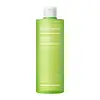What's inside
What's inside
 Key Ingredients
Key Ingredients

 Benefits
Benefits

 Concerns
Concerns

 Ingredients Side-by-side
Ingredients Side-by-side

Water
Skin ConditioningButylene Glycol
HumectantDipropylene Glycol
HumectantPolyglyceryl-4 Caprate
Emulsifying1,2-Hexanediol
Skin ConditioningPentylene Glycol
Skin ConditioningSodium Cocoyl Apple Amino Acids
Skin ConditioningAllantoin
Skin ConditioningNiacinamide
SmoothingPanthenol
Skin ConditioningSodium Citrate
BufferingHexylene Glycol
EmulsifyingCitric Acid
BufferingSodium Hyaluronate
HumectantZinc PCA
HumectantTetrasodium Glutamate Diacetate
2-Capryloyl Capryloyl Methyl Alaninate
AntiseborrhoeicMadecassoside
AntioxidantMelaleuca Alternifolia Leaf Extract
PerfumingMyristoyl/Palmitoyl Oxostearamide/Arachamide Mea
Skin ConditioningSalicylic Acid
MaskingWater, Butylene Glycol, Dipropylene Glycol, Polyglyceryl-4 Caprate, 1,2-Hexanediol, Pentylene Glycol, Sodium Cocoyl Apple Amino Acids, Allantoin, Niacinamide, Panthenol, Sodium Citrate, Hexylene Glycol, Citric Acid, Sodium Hyaluronate, Zinc PCA, Tetrasodium Glutamate Diacetate, 2-Capryloyl Capryloyl Methyl Alaninate, Madecassoside, Melaleuca Alternifolia Leaf Extract, Myristoyl/Palmitoyl Oxostearamide/Arachamide Mea, Salicylic Acid
Water
Skin ConditioningButylene Glycol
HumectantPolyglyceryl-6 Caprylate
EmulsifyingIsononyl Isononanoate
EmollientPanthenol
Skin ConditioningSodium Hyaluronate
HumectantHyaluronic Acid
HumectantSodium Acetylated Hyaluronate
HumectantHydroxypropyltrimonium Hyaluronate
Hydrolyzed Sodium Hyaluronate
Skin ConditioningSodium Hyaluronate Crosspolymer
HumectantPotassium Hyaluronate
Skin ConditioningHydrolyzed Hyaluronic Acid
HumectantHamamelis Virginiana Extract
AntiseborrhoeicCamellia Sinensis Leaf Extract
AntimicrobialChamomilla Recutita Extract
Skin ConditioningTrehalose
HumectantAllantoin
Skin ConditioningDipropylene Glycol
HumectantPolyglyceryl-6 Dicaprate
EmulsifyingDipotassium Glycyrrhizate
HumectantHydroxyacetophenone
AntioxidantPolyglyceryl-4 Lauryl Ether
EmulsifyingHydroxyethylcellulose
Emulsion Stabilising1,2-Hexanediol
Skin ConditioningXanthan Gum
EmulsifyingCaprylyl Glycol
EmollientDisodium EDTA
Malachite Extract
AntioxidantWater, Butylene Glycol, Polyglyceryl-6 Caprylate, Isononyl Isononanoate, Panthenol, Sodium Hyaluronate, Hyaluronic Acid, Sodium Acetylated Hyaluronate, Hydroxypropyltrimonium Hyaluronate, Hydrolyzed Sodium Hyaluronate, Sodium Hyaluronate Crosspolymer, Potassium Hyaluronate, Hydrolyzed Hyaluronic Acid, Hamamelis Virginiana Extract, Camellia Sinensis Leaf Extract, Chamomilla Recutita Extract, Trehalose, Allantoin, Dipropylene Glycol, Polyglyceryl-6 Dicaprate, Dipotassium Glycyrrhizate, Hydroxyacetophenone, Polyglyceryl-4 Lauryl Ether, Hydroxyethylcellulose, 1,2-Hexanediol, Xanthan Gum, Caprylyl Glycol, Disodium EDTA, Malachite Extract
 Reviews
Reviews

Ingredients Explained
These ingredients are found in both products.
Ingredients higher up in an ingredient list are typically present in a larger amount.
1,2-Hexanediol is a synthetic liquid and another multi-functional powerhouse.
It is a:
- Humectant, drawing moisture into the skin
- Emollient, helping to soften skin
- Solvent, dispersing and stabilizing formulas
- Preservative booster, enhancing the antimicrobial activity of other preservatives
Allantoin is a soothing ingredient known for its protective and moisturizingg properties. Because of this, it is often added to products with strong active ingredients.
Studies show higher concentrations of this ingredient can promote wound healing.
Though it can be derived from the comfrey plant, allantoin is produced synthetically for cosmetic products to ensure purity.
Learn more about AllantoinButylene Glycol (or BG) is used within cosmetic products for a few different reasons:
Overall, Butylene Glycol is a safe and well-rounded ingredient that works well with other ingredients.
Though this ingredient works well with most skin types, some people with sensitive skin may experience a reaction such as allergic rashes, closed comedones, or itchiness.
Learn more about Butylene GlycolDipropylene Glycol is a synthetically created humectant, stabilizer, and solvent.
This ingredient helps:
Dipropylene glycol is technically an alcohol, but it belongs to the glycol family (often considered part of the ‘good’ alcohols). This means it is hydrating and gentle on skin unlike drying solvent alcohols like denatured alcohol.
As a masking agent, Dipropylene Glycol can be used to cover the smell of other ingredients. However, it does not have a scent.
Studies show Dipropylene Glycol is considered safe to use in skincare.
Learn more about Dipropylene GlycolPanthenol is a common ingredient that helps hydrate and soothe the skin. It is found naturally in our skin and hair.
There are two forms of panthenol: D and L.
D-panthenol is also known as dexpanthenol. Most cosmetics use dexpanthenol or a mixture of D and L-panthenol.
Panthenol is famous due to its ability to go deeper into the skin's layers. Using this ingredient has numerous pros (and no cons):
Like hyaluronic acid, panthenol is a humectant. Humectants are able to bind and hold large amounts of water to keep skin hydrated.
This ingredient works well for wound healing. It works by increasing tissue in the wound and helps close open wounds.
Once oxidized, panthenol converts to pantothenic acid. Panthothenic acid is found in all living cells.
This ingredient is also referred to as pro-vitamin B5.
Learn more about PanthenolSodium Hyaluronate is hyaluronic acid's salt form. It is commonly derived from the sodium salt of hyaluronic acid.
Like hyaluronic acid, it is great at holding water and acts as a humectant. This makes it a great skin hydrating ingredient.
Sodium Hyaluronate is naturally occurring in our bodies and is mostly found in eye fluid and joints.
These are some other common types of Hyaluronic Acid:
Learn more about Sodium HyaluronateWater. It's the most common cosmetic ingredient of all. You'll usually see it at the top of ingredient lists, meaning that it makes up the largest part of the product.
So why is it so popular? Water most often acts as a solvent - this means that it helps dissolve other ingredients into the formulation.
You'll also recognize water as that liquid we all need to stay alive. If you see this, drink a glass of water. Stay hydrated!
Learn more about Water